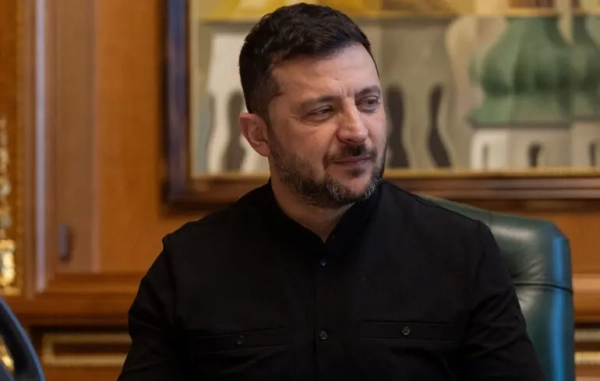
It is often said that America’s opioid epidemic has inspired a softer, more compassionate response than past drug overdose crises. But the Ohio gubernatorial race is revealing that that’s not always the case.
In a new ad released by Democrat Richard Cordray, Stark County, Ohio, Sheriff George Maier boasts that Cordray has “called for longer sentences for drug dealers.” And it’s true: Cordray has said that, as governor, he “will work with law enforcement to make sure drug dealers are convicted and serve long prison sentences.”
In other words, the Democrat running for governor of Ohio wants to escalate at least one aspect of the war on drugs.
This is not a case of the Democrat going further to the right on criminal justice issues than his opponent. The Republican candidate, Mike DeWine, has not only backed longer prison sentences for drug dealers but also opposes a ballot initiative, which Cordray supports, that would reduce drug possession — not trafficking — offenses from felonies to misdemeanors.
But Cordray’s ad shows an underappreciated aspect of the opioid epidemic, particularly in states like Ohio that have been hit hard by the crisis. While there is some push — including by Cordray — to get more people into addiction treatment, there is also a parallel push by both Republicans and Democrats for a punitive, “tough on crime” approach to the opioid crisis.
One way to think about it: The bipartisan consensus has split drug users from drug dealers. Under this view, drug users need treatment, while drug dealers need prison time.
The problem is that, according to research and experts, locking drug dealers up for longer is simply not an effective way to fight drug addiction or crime. And actually differentiating between who’s a drug dealer and who’s a drug user is surprisingly difficult — because these lines often blur as, for example, people with addiction sell some of their drugs to make ends meet or share with their friends when they use together.
That leaves us in a world where there is a push for more public health efforts and more criminal justice efforts in response to the opioid epidemic, which is now the deadliest drug overdose crisis in US history. And it’s a world where, despite the best effort of policymakers to differentiate between drug users and dealers, more people who actually need treatment may instead end up in prison.
A new, futile war on drugs in response to the opioid crisis
Last year, I tried to gauge the criminal justice response to the opioid epidemic for an article here at Vox. I found that as of September 2017, at least 16 states had passed new laws that would impose harsher punishments for drug offenses since 2011 (when the opioid crisis was deemed an epidemic by the Centers for Disease Control and Prevention).
Ohio was one of those states, passing a law in 2016 that effectively increased prison penalties for heroin trafficking. But the state went even further this year, with Republican Gov. John Kasich signing a law that increased prison sentences for illicit fentanyl, a synthetic opioid that’s over time replaced heroin in the illegal drug market in certain parts of the country. Both measures received Republican and Democratic support in the legislature, although Republican support was stronger overall.
Cordray’s ad and comments suggest that he wants to go even further.
It’s not just changes in the law, though. Across the country, prosecutors have also started to file harsher charges when someone dies of a drug overdose. The idea: If a person gives or sells drugs to someone else who dies of an overdose, then that person should be, legally, held culpable for the overdose death. This often results in a “drug-induced homicide” charge that can result in much longer prison time than a charge for drug possession or trafficking.
Democrats and Republicans, from Democratic Pennsylvania Attorney General Josh Shapiro to Republican US Attorney General Jeff Sessions, have encouraged the harsher prosecutor approach.
One problem with the harsher punishments: They simply won’t work to stem the opioid crisis, even as they fuel higher incarceration rates, inflate state prison budgets, and take people away from their communities for longer.
As Mark Kleiman, a drug policy expert at the Marron Institute at New York University, previously told me, “We did the experiment. In 1980, we had about 15,000 people behind bars for drug dealing. And now we have about 450,000 people behind bars for drug dealing. And the prices of all major drugs are down dramatically. So if the question is do longer sentences lead to a higher drug price and therefore less drug consumption, the answer is no.”
One of the best studies backing this is a 2014 review of the research by Peter Reuter at the University of Maryland and Harold Pollack at the University of Chicago. They found that while simply prohibiting drugs to some extent does raise their prices, there’s no good evidence that tougher punishments or harsher supply elimination efforts do a better job of driving down access to drugs and substance misuse than lighter penalties. So increasing the severity of the punishment doesn’t do much, if anything, to slow the flow of drugs.
This might defy intuition. Why don’t harsher punishments work? One big problem is that people simply don’t know how harsh the laws are. Just consider this for yourself: Can you say, off the top of your head, what the punishment for heroin trafficking is in your state or under federal law?
Even if people do know the punishment, maybe they think they won’t get caught — since, after all, the rates of convictions for crimes, even violent ones, are pretty low.
“Expecting that you’re going to change the behaviors of the [drug] retailers with those sentences is just cognitively unrealistic with the way we fallible mortals process benefits and consequences and make decisions,” Jon Caulkins, a drug policy expert at Carnegie Mellon University, previously told me. “It’s symbolic at some level; it’s an expression of our outrage and frustration. It’s not very practical.”
And to the extent that these laws do at least remove drug traffickers from the streets, those dealers are merely replaced with others — so there isn’t even a significant incapacitation effect. A 2009 review of the research by the RKC Group, funded by the Colorado Criminal Justice Reform Coalition, backed this up. It concluded, “Simply put, the market responds to the demand for drugs by replacing drug sellers sent to prison with either new recruits or by the increased drug selling of dealers already in the market. As a result, the incapacitation effect found for some other offenses is largely nullified in the case of drug dealing.” (Other criminal justice researchers agree with this conclusion.)
The failure of the punitive policies is one reason drug policy experts have emphasized other approaches to resolving the opioid epidemic — particularly more treatment (including medications like methadone and buprenorphine), more harm reduction (such as better access to the opioid overdose antidote naloxone), fewer painkiller prescriptions (while ensuring the drugs are available to those who really need them), and policies that can help address the root cause of addiction (like mental health issues and socioeconomic despair).
But the “tough on crime” approach — of locking up drug dealers for longer — isn’t just ineffective. It also may lead to the incarceration of people who need treatment, not prison time.
The flawed attempts at separating drug users and drug dealers
Politicians backing new “tough on drugs” measures often explain them by differentiating between drug dealers and drug users. That’s how they simultaneously justify ramping up both a softer approach (for users) and a harsher one (for dealers).
Cordray exemplifies this. In his full comments on prison time for drug dealers, he said, “As governor, I will work with law enforcement to make sure drug dealers are convicted and serve long prison sentences, while people who need substance abuse treatment can get it in our communities.” And while he has supported defelonizing drug possession through a ballot initiative, he has called for tougher punishments for drug dealing.
But on the ground, the line between user and dealer is often blurred. A lot of the people selling or sharing drugs are not the stereotypical drug dealer. They’re often people who have drug addiction themselves and are selling some of the drugs they have to get money for more drugs and make ends meet. Or they’re people who are simply sharing drugs with their friends and peers.
Take one story from Clay County, Florida: There, 18-year-old Ariell Brundige joined her boyfriend, 26-year-old Tyler Hamilton, and a friend, 32-year-old Christopher Williams, to buy heroin from 32-year-old Trumaine Muller. According to police, the heroin turned out to be fentanyl. Brundige overdosed, Williams called 911, but she still died.
Police then charged Williams and Hamilton with manslaughter because they were allegedly involved in the drug activity that led to Brundige’s death. But Williams and Hamilton didn’t sell heroin; they merely went with Brundige to buy it and then use it with her. Williams even called 911 to try to save his friend. But in the end, Williams and Hamilton faced a charge that can carry up to 15 years in prison and pleaded guilty.
There are now dozens of similar stories reported all over the media, including by the Chicago Tribune, the New Republic, the New York Times, and Rolling Stone.
The Drug Policy Alliance, a criminal justice reform group, summarized some of the evidence in 2017:
Some data suggests the line between user and dealer is similarly blurred, although to a lesser degree, for those convicted of drug offenses in general: A 2017 Bureau of Justice Statistics report found that “nearly a third of drug offenders (30 percent of state prisoners and 29 percent of jail inmates) said they committed the offense to get drugs or money for drugs.”
Now, even if it were possible to distinguish between drug dealer and user, the evidence indicates that locking people up for longer would not be an effective means to combat opioid misuse and addiction. But the fact is that the distinction is often not possible to make, at least for law enforcement.
The result is that, despite the best intentions of Cordray and others like him, the policies they support will land more people who are addicted to drugs and need help in prison — serving a sentence, paid for by taxes, that most likely won’t even reduce the harms of the opioid crisis.
Sourse: vox.com






